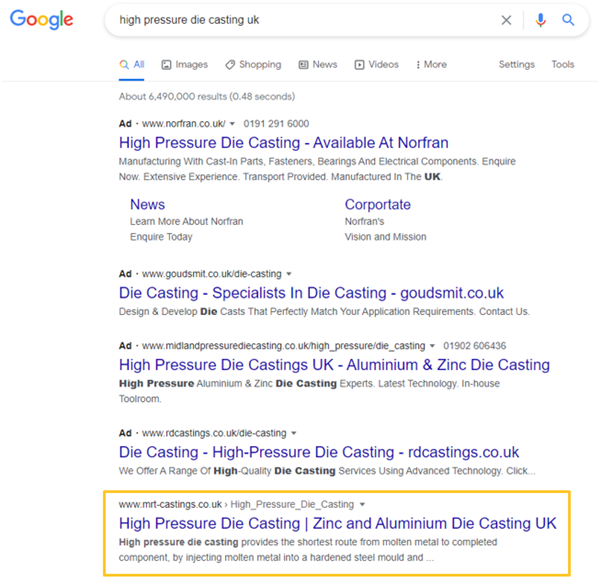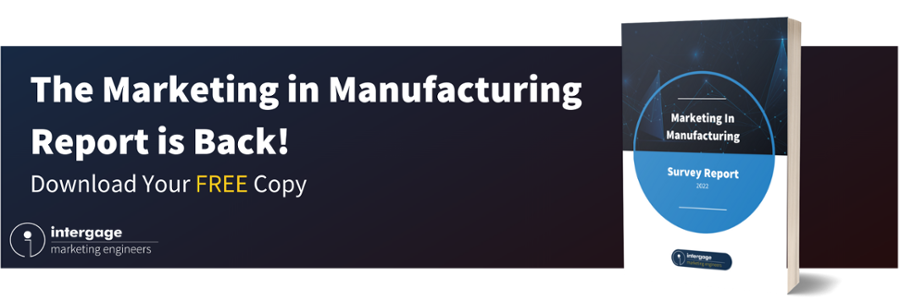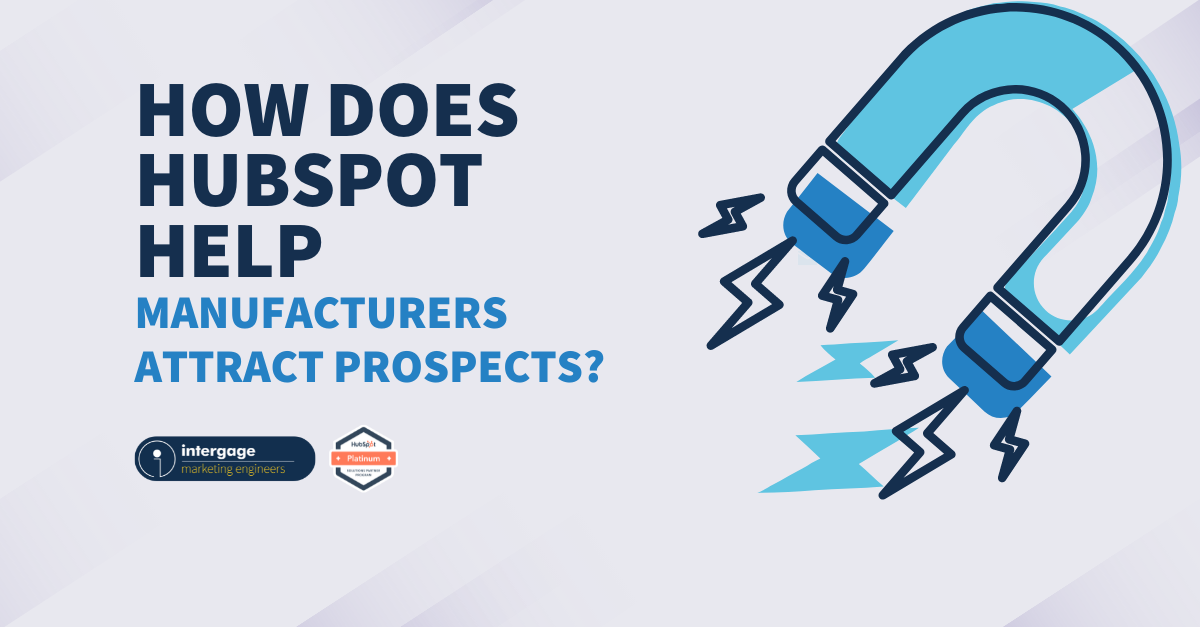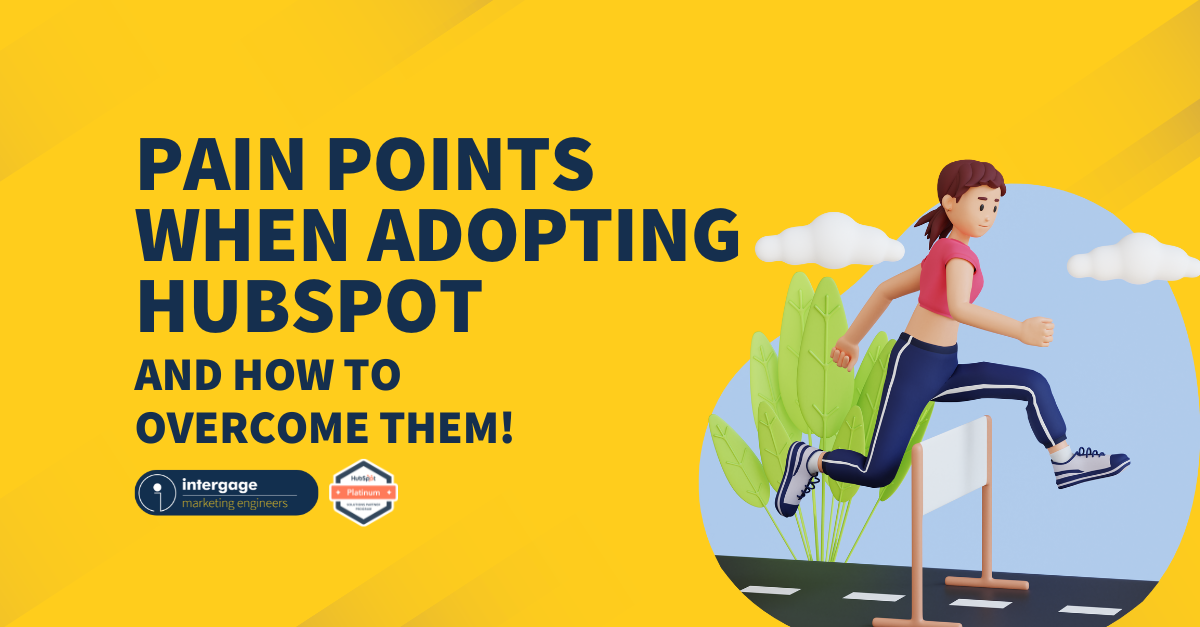7 Common Industrial Digital Marketing Problems (And Solutions)
In the digital world, the only constant is change. However, over years of auditing websites and developing our Digital Marketing Audit offering, we have found there to be seven common digital marketing pitfalls within manufacturing and engineering businesses.
These have changed very little over the years and affect businesses large and small across every industry we have worked with.
If your digital marketing isn’t producing the results you were hoping for, the likelihood is, you’re subject to one of the following pitfalls, or a myriad of them!
So, what are these common mistakes and how can you avoid them?
1. Poor messaging
This is something we see a lot when reviewing industrial web copy. It is amazing how many times a positioning statement on a home page talks all about the business itself and does not clearly highlight the challenges that business can resolve for its customer base.
Typically, the language is inward-facing using lots of jargon and terminology that a prospect in the early part of their buying journey, just will not understand.
It's important that messaging aligns with your buyer personas – relevancy is key to good engagement. Remember the reason you developed your website in the first place - for your customers! So, use a language they understand and focus on the challenges you can resolve for them.
2. Too much reliance on the brand name
To grow new business enquiries you need to rank highly for non-branded search terms. The reason for this is to allow users who aren’t already aware of your brand can find you for relevant product and service-related searches or even further up the funnel, problem-related searches.
For example, Intergage client MRT Castings holds top organic positions for terms ‘aluminium die casting’ and ‘high pressure die casting uk’ meaning potential customers don’t necessarily need to know of the business in order to find them in search engines.

Brand related traffic is great and is testament to your outreach and authority in your space, but driving incremental non-branded traffic means your website is getting in front of new audiences.
However, this isn’t always easy to achieve, particularly if you are in a competitive marketplace. It takes focus on creating the right content for the right keywords and structuring this content in a pillar format which we talk about more here.
3. Wasting money on paid advertising
Paid search is a great way to drive consistent levels of traffic to your website and is an ideal solution to promote events, products and services as it guarantees page one positions (mostly!)
It can also be used to supplement organic search and bolster traffic acquisition for terms you do not rank highly for in SERPs due to levels of competition or lack of content.
However, when done poorly it can cost a lot of money for very little return – it would be very easy to write a blog post on this one subject alone! It is amazing how much budget businesses waste on non-converting keywords or even worse, search terms they shouldn’t be sponsoring in the first place!
Time and time again, we see businesses pouring money down the drain sponsoring keywords that drive poorly qualified traffic or keywords that are irrelevant to their business. Equally, we see lots of businesses drive traffic to poorly converting landing pages meaning they get very little ROI from their Google Ads investment.
4. Not investing enough in paid advertising
As competition online continues to increase so does the amount of ad spend required to compete on highly competitive terms.
It is important your ads appear towards the top of page one to generate the required click through rates and KPIs are set to lock-down what you are willing to pay for a lead. Once you understand what it costs to drive a user to your landing page and how many users you typically need to drive before one converts, you can ensure you have the appropriate level of budget in place.
If using Google Ads, run Impression Share reports to understand what percentage of traffic you are not serving with your ads and understand which keywords are converting so you can focus on those that drive the highest levels of conversion.
Avoid spreading your budget too thinly. Try and focus on products/services that deliver a higher margin or turnover so you can acquire the traffic that will make the biggest difference to your business. Doing one thing well and dominating that space gives much better results than trying to be all things to all people if limited by budget.
Geru is a great tool to help understand the relationship between paid advertising spend, click-through rate and landing page conversion rates. You can create simulations to understand how your ROI is affected by improving conversion rates and click-through rates making is really easy to set KPIs!
5. Not understanding the competition
When conducting a Digital Marketing Audit, we ask our manufacturing and engineering clients to provide us with three competitors in their space so we can benchmark performance and identify opportunities to beat them online. We use digital tools which allow us to strip the competition naked of their digital marketing secrets, providing insights into channel usage, search visibility and ad creatives.
However, the biggest takeaway tends to be that the competitive landscape online is totally different to what the customer thinks it is. There are often businesses and websites out there stealing traffic from you without you even realising simply because you don’t consider them as direct competition.
By fully understanding this information you can focus on what the real online competition is doing well and benchmark against appropriate businesses in this space.
6. No clear user journeys
When landing on your home page it is vitally important a user understands that your business identifies with their needs. As with all the points raised, this is a huge subject, but the biggest focus should be around segmentation. Making it as easy as possible for your audience to find information that’s relevant for them is crucial. This can be done in a number of ways.
People Segmentation
- By role (Business Leader, Sales leader, Marketing leader for example...)
- By relationship (VIP Customer / customer / potential customer / supplier / press)
- By psychographic (persona / attitudes / values and lifestyle)
- By new user v repeat visitor v highly engaged visitor
- By stage in the buying journey e.g. problem aware, product aware and so on
Benefit Segmentation
- By pain / problem
- By solution / intent
- By product type
- By focus (e.g. quality, price, service, speed of delivery)
Firmographics
- By industry / sector
- By company size (turnover / employees)
- By goal (e.g. grow new business sales / improve customer satisfaction / improve customer lifetime value)
- By status (Customer / Prospect / Suspect)
Geographic
- By geographic region / country
- By Language
By understanding your audience and developing personas you can get a clearer picture of how prospects consume content – there is no one size fits all. Be prepared to invest in on-page user testing with individuals who fit your ideal buyer profile and more importantly, ensure you have software on the website that allows you to track visitor interactions, such as HotJar. Check it out if you want to understand more about user engagement on your website!
7. Targeting the wrong keywords
This is something we see more often than you might think – and often it’s done by accident! Businesses end up driving erroneous traffic to their site because of a single rogue blog post or because they’re using the wrong language. Equally, these issues can lead to a lack of traffic too!
When writing copy for your website it is important you use a language that resonates with your audience. Ask yourself if you are using the same language as your prospects to describe your products and services. For example, a prospect at the start of their buying journey will need to be taken from unaware to problem aware to solution aware. This means you will need to educate them using a language they understand and not bombard them with technical jargon.
A great place to start is to ask your existing customers to articulate what they would type into a search engine when looking for a supplier like you. Use Google Analytics and Search Console and review any Google Ads campaigns you are running to understand which keywords convert and drive engagement. Ensure you focus content on these terms.
This is why it’s so important to nail down your personas before creating any content. Without fully understanding your audience and who you are trying to attract, you can’t possibly guarantee that you’re using the right language!
These are the seven most common digital marketing pitfalls we find in manufacturing and engineering businesses. Hopefully, this can provide you with an insight into the problems you may be coming up against and how you can avoid them to meet and exceed your marketing objectives!
Find out what other manufacturing and engineering businesses consider their biggest marketing challenges in The Marketing In Manufacturing Report. Download your FREE copy here.







